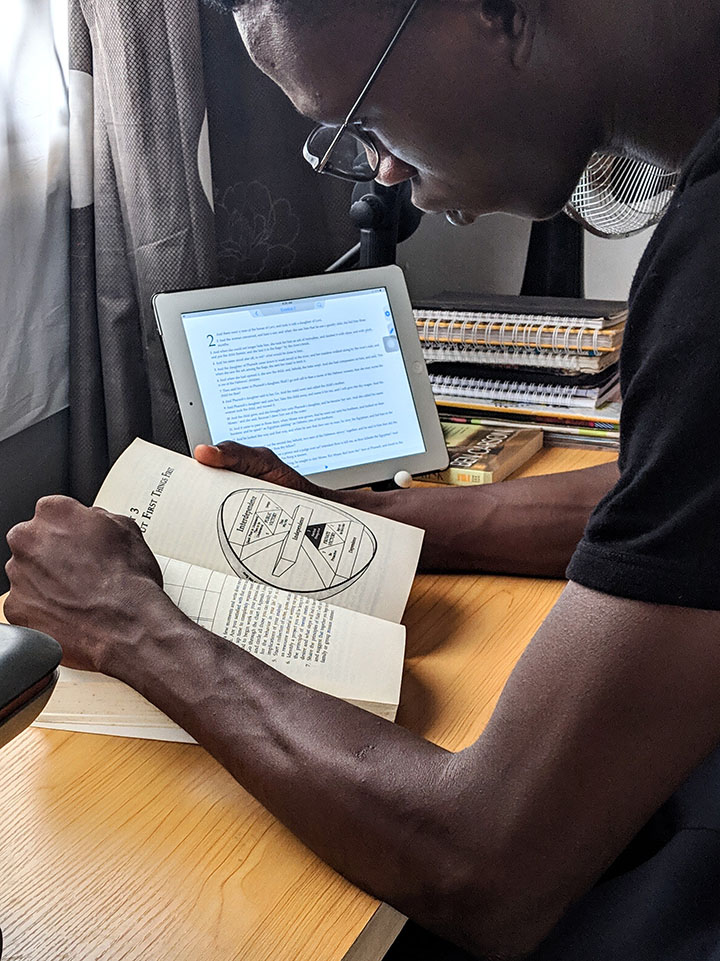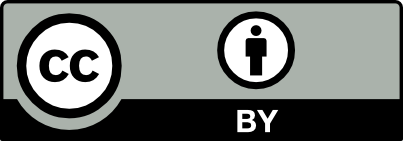Reading from Print vs Screens: The 4 Most Surprising Facts from Recent Research
[Updated 11/9/24. Original publication date: 3/12/20.]
"We do not err as a society when we innovate, but we do when we ignore what we disrupt or diminish while innovating," says Neuroscientist Maryanne Wolfe.
Dr. Wolfe is the Director of the Center for Dyslexia, Diverse Learners, and Social Justice, and often uses this quote from MIT scholar Sherry Turkle when presenting on her "print vs screens" research about disruption and change.
This quote perfectly encapsulates our opinion of the way the transition from paper to screens has occurred over the last 20+ years.
Innovations occur, new digital technologies are repeatedly invented to replace traditional books with on-screen reading.
The shiny new thing has a feature that replaces the old thing in some way. But what if the new thing comes with disruptive consequences from shifting to on-screen reading that are ignored? Often the decision to change from print to screens assumes there is no difference in learning outcome, but what if there is? Luckily, there has been a great deal of growing research conducted on this topic.
Educators and instructional designers should pay particular attention to recent research involving the comprehension differences between reading from print versus reading from screens. Studies conducted over very long periods involving over 180,000 college students combined indicate there are student comprehension differences in some specific situations, and an overall preference for print. New and ongoing research is looking into why this is.
We reviewed some recent studies that focus on comprehension differences and medium preferences (as in, paper vs screens) among college students, and made a list of the most surprising facts. We also reviewed recent studies that begins to unravel why the comprehension differences may exist and how young brains react differently to each reading medium.
This post would be remiss if we did not mention that there are benefits to technological innovations, and that some learners will prefer and benefit from using digitally delivered content on screens. Our point overall is educators and instructional designers in decision making positions should be aware that there is not a one size fits all decision to be made.
The simple fact is that research shows there are certainly measurable differences in comprehension when it comes to print vs screens, and as a result educators and instructional designers should consider the educational impact the reading medium will have on their students.
printMe1.com's approach is to use technology to provide a convenient print option for content creators and instructors using open source content to offer to their learners, after a PDF has been distributed digitally.
Here are the surprising facts from recent research about reading from print:
Fact 1- Students want print, print the PDF's they get, and think they do better when using print.

In a 2017 study involving 10,293 college students worldwide, a broad majority indicated a preference for print. There were 12 reading formats presented, and 78.8% of respondents chose print as the preferred reading format. This was strongest for younger college students and the strength of preference was less intense as academic rank increased.
When asked to respond to the statement "I prefer to print out my course readings rather than read them electronically", 68.8% agreed or strongly agreed.
Further review identified print was preferred when the content was lengthy (more than 5 pages).
Also of importance, the study indicated that the students themselves thought they would do better if they studied using print.
Study: Academic reading format preferences and behaviors among university students worldwide: A comparative survey analysis. (2018) Diane Mizrachi, Alicia M. Salaz, Serap Kurbangolu, Joumana Boustany, on behalf of the ARFIS Research Group. [https://journals.plos.org/plosone/article/file?id=10.1371/journal.pone.0197444&type=printable]
Fact 2- The "Digital Native" hypothesis that today's students have grown up in a digital world and won't perform as well using print simply isn't true.

A meta-analysis of reading comprehension studies was published in 2018 and examined research involving over 170,000 college participants from 2000-2017. Each study tested students by having them read the same text from a screen and in print, and then take a test on the content they read.
Not only did those reading from print perform better in testing than their peers reading from a screen, but surprisingly, as time progressed during the study period, the performance of print readers remained consistent over the nearly 20 years of the study. However, during the same period the proficiency of the screen readers gradually diminished, as the ones identified as "Digital Natives" entered the study. Theories as to why this is happening involve students developing habits early on that favor skimming instead of deep reading.
This contradicts the notion that today's students are "digital natives" and, therefore should do better from digital than print. Print is beneficial for course materials even today, and a strong inference can be made from this study that the presumed digital natives need print.
Study: Don't throw away your printed books: A meta analysis on the effects of reading media on reading comprehension. (2018) Pablo Delgado, Cristina Vargas, Rakafet Acketman, Ladislao Salmeron. [https://www.sciencedirect.com/science/article/pii/S1747938X18300101 ]
Fact 3- Reading from print on paper vs a device with a screen like a Kindle are different experiences and impact what information is remembered.

An experiment was recently conducted where participants had to read a long mystery story on a Kindle and also on a pocket sized print book. The research conducted by Anne Mangen, et. al. was published in 2019.
Previous studies have indicated that long informative texts, or long texts with some narrative elements, are comprehended better when reading from print versus a screen, and this experiment focused on comprehension of a literary work read on a Kindle and in print.
The participants were then tested on various levels of comprehension such as engagement, recall, and ability to reconstruct the plot of the story. The results between the formats were considered identical overall, but there was an inferior performance from screen readers with respect to temporal and chronological details.
There are theories evolving as to why this may be, and also referenced in research Mangen, et. al., conducted in 2013. Reading from print is a multi sensory experience. Holding an object in your hand like a soft cover bound print, or a hard cover book, and turning pages while reading may be adding important reference points from which the brain can remember the words it processes. "Where was it on the page?" & "How far was it in the book?" are two kinds of physical, 3D reference points that screens are not able to provide when reading, which might be impacting remembering when things occurred in the story. The progress in a print book can be measured in the height of a stack, the weight of the pages in one hand versus the other, changing over time. Scrolling, swiping, or pushing a button to electronically turn a page on a device is a 2D action with less sensory involvement.
A more obvious reason is it's easier to focus when reading from print because there are no electronic distractions and because we recognize the text is fixed and the brain can focus more on the content. The "fixity" of the text on paper possibly requires less cognitive load when reading.
An additional study by Pablo Delgado and Ladislao Salmerón, published in late 2020 confirmed that reading on screen caused a lack of focus, and that deficiency increased albeit by a small amount when under pressure from a time constraint. In this study, expository texts were studied as opposed to narrative texts because the expository texts contain many cognitively complex details like multiple conceptual ideas, unfamiliar vocabulary and lengthy sentence structures. This study focused on typically deep reading content instead of shallow reading.
This study's conclusion called on those educational decision makers to consider the fact that printed texts are more appropriate when it comes to in-depth reading, especially with lengthy texts, and be cautious when considering a complete shift from print to digital reading products.
Studies are showing differences in testing outcomes between the formats favoring print and the next steps are to further understand why.
Study 1: Comparing Comprehension of a Long Text Read in Print Book and on Kindle: Where in the Text and When in the Story. (2019) Anne Mangen, Gerard Olivier, and Jean Luc Velay. [https://www.ncbi.nlm.nih.gov/pmc/articles/PMC6384527/pdf/fpsyg-10-00038.pdf]
Study 2: Reading linear texts on paper versus computer screen: Effects on reading comprehension. (2013) Anne Mangen, Bente R. Walgermo, Kolbjørn Brønnick. [https://www.sciencedirect.com/science/article/pii/S0883035512001127 ]
Study 3: The inattentive on-screen reading: Reading medium affects attention and reading comprehension under time pressure (2020) Pablo Delgado and Ladislao Salmerón. [https://www.ncbi.nlm.nih.gov/pmc/articles/PMC7463273/]
Fact 4- Reading from print & paper uses higher wavelength brainwaves that involve more focused attention and mental capacity than screens
A 2023 study measured the brainwaves used when reading from print vs screens using an electroenephalogram (EEG). The study involved 15 participants ages 6-8 and had them read two age appropriate 100-word expository texts from a print and also a screen while wearing EEG caps. The participants were asked comprehension questions after each version was read.
The EEG measured the brainwaves used while reading. Higher frequency waves (beta & gamma) associated with focused attention and higher mental activity were recorded while reading from print. Lower frequency waves (theta & alpha) associated with low attention spans and mind wandering were recorded while reading from a screen. The ratio of low frequency waves to high frequency waves was largest when reading from a screen and negatively correlates to visual attention abilities.
The study suggests when reading from screens the participants displayed brain activity patterns associated with daydreaming and less focused attention, whereas when reading from print the participants displayed brain activity pattern associated with concentration. Additionally screens were found to overload the attention of children in the study. The "cognitive load theory" suggests there is a maximum limit to the processing of sensory information, and exposure to screens attracts attention while trading off information processing quality.
The conclusion of the study was that differences in the EEG results and behavioral findings suggest differences that favor reading from print (paper) over reading from screens in children.
Study: Higher theta-beta ratio during screen-based vs. printed paper is related to lower attention in children: An EEG study. (2023) Michal Zivan, Sasson Vaknin, Nimrod Peleg, Tzipi Horowitz-Kraus [https://journals.plos.org/plosone/article?id=10.1371/journal.pone.0283863]
Conclusion
Two recent studies involving over 170,000 and 10,000 college students each measuring comprehension differences & format preferences between reading from print vs screen have produced some very surprising results.
Students prefer to print out their course materials, especially for longer texts. PDF's greater than 5 pages were determined in one study to be the point where print is preferable. Students also prefer print because they think they learn better from it.
Also surprising is students who are considered to be "Digital Natives" perform consistently as well as those students from "less digital" eras when reading from print, but the meta analysis noticed that "Digital Natives" perform worse reading from screens than the students from "less digital" eras. This may be from overemphasis on skills that promote skimming instead of deep reading.
A study that measured the brainwaves of participants with ages 6-8 while reading from print vs a screen found that the EEG results and behavioral findings suggest differences that favor reading from print (paper) over reading from screens in children.
Researcher Anne Mangen, et. al., conducted an experiment to identify the differences between reading a literary work from print vs on a Kindle. Reading from print versus screens is beneficial for reading longer informational texts, or texts that are longer and may include narrative elements. For literary works, there is less of a difference between the formats except when testing for temporal or chronological details, in which case recalling those types of details is more successful when reading from print.
About us:
printMe1.com has created some innovative ways to print, remix, and distribute OER PDF's to US students and bookstores at no additional cost beyond our already reasonable print on demand service prices.
If you are teaching and already have a print option for OER PDF's, or are using an OER title already in print, great! But if you need an OER printing service, please check out our free PDF Hosting feature. It's a very easy way to provide a print on demand option for PDF materials used in class that are OER, public domain, or works you hold the copyright on, and can be used to direct students or bookstores in the US to a print of your course material. If you have questions, please contact us here.

This work is licensed under a Creative Commons Attribution 4.0 International



![Single-Sided PDF Printing [Updated 4-8-24]](http://public/images/530/blog/upload/25b15134-header.jpeg)















![PDF's of enacted US Laws, Federal Court, and other US publications reformatted for Easy-to-Read Printing in US Letter Formats- Free downloads [Updated 8/15/25]](http://public/images/530/blog/upload/5aed875-abraham-lincoln-memorial-1920x1080.jpg)

